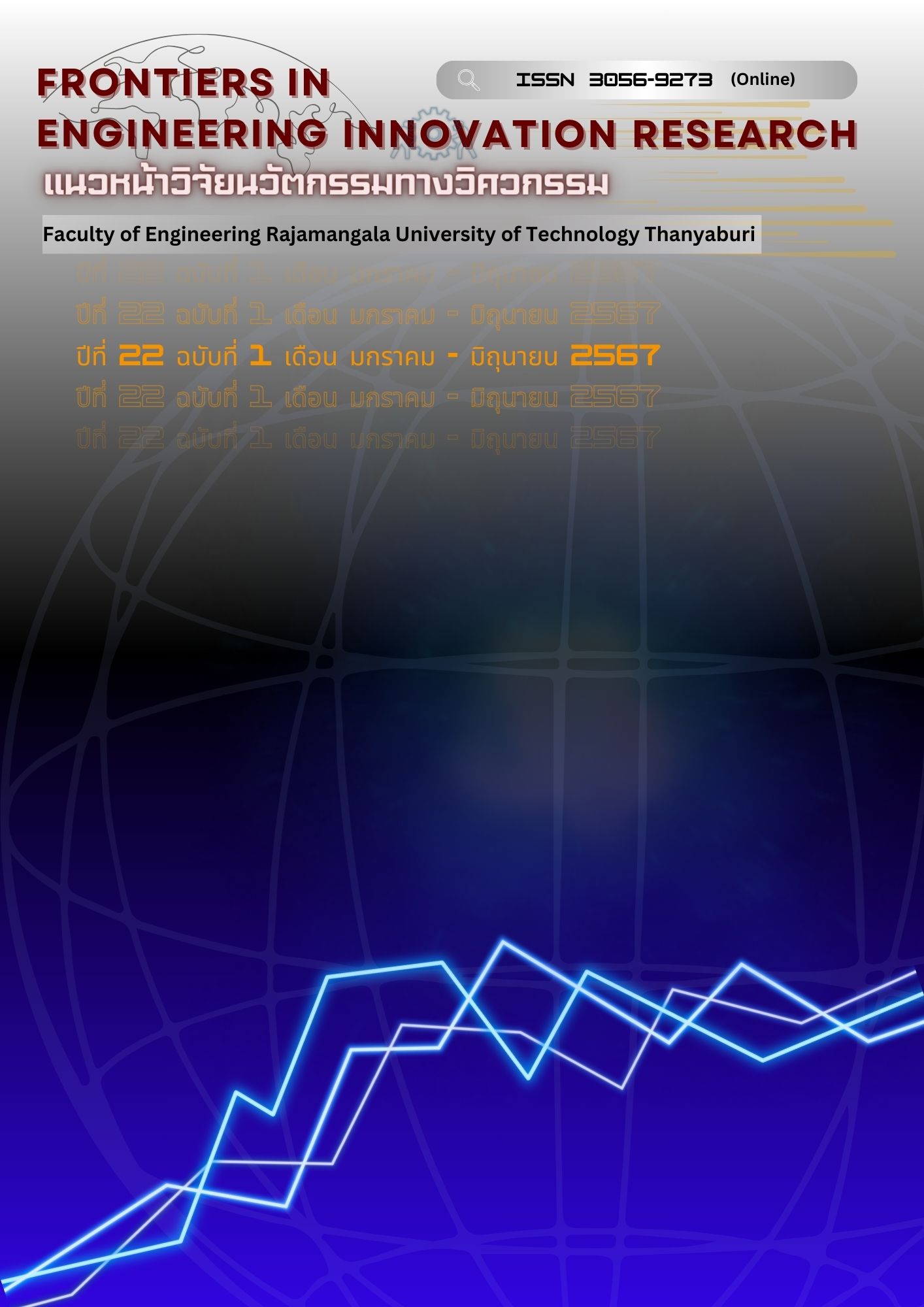The Study of using Hot Water from the Solar-Exposed Water Pipeline for the Electricity Generation from the Thermoelectric Sets with and without the Underground Heatsink Unit
Main Article Content
Abstract
This article had the objective to study the electricity generation from the water heat energy storage in the water pipeline laid above the ground for watering plant and vegetables in the morning and in the evening. During the day the water pipeline would get the energy from the sunlight, causing the water in the pipeline have nigh temperature - the useless thermal energy. The experimental sets consisted of the thermal exchange equipment of the water in the pipeline in the forms of 2 sets of the steel box pipe 76.20 mm. wide, 76.20 mm. high, 152.40 mm. long, and 1.8 mm. thick. Each set was installed with 2 thermoelectric Model SP1848-27145 connected in series, functioning to generate electricity with the 10-ohm electrical resistance load. Both steel box pipe sets were enclosed with the thermal foam insulator and shaded, so that they would not receive the thermal energy form the other sources. The first set was installed with the heatsink fin underground to cool the thermoelectric, but the second set was not. Both sets were assembled in parallel by connecting with the High-Density Polyethylene water pipe and the electrical voltage and temperature were recorded every 15 minutes from 9 a.m. – 5 p.m. The research result found that the steel box pipe with the heatsink fin underground could generate the maximum electricity at 404.12 mV., higher than 60.16 mV. of the steel box pipe without the heat sink fin, at the solar density at 132,000 lux.
Article Details

This work is licensed under a Creative Commons Attribution-NonCommercial-NoDerivatives 4.0 International License.
The manuscript, information, content, picture and so forth which were published on Frontiers in engineering innovation research has been a copyright of this journal only. There is not allow anyone or any organize to duplicate all content or some document for unethical publication.
References
EPPO: Energy Policy and Planning office. Energy Status 2022 [Internet]. c2003- [cited 2023 Nov 19]. Available from: https://www.eppo.go.th/index.php/th/energy-information/energy-status/year?orders[publishUp]=publishUp&issearch=1
EGAT: Electricity Generating Authority of Thailand. Proportion of fuel use to produce electrical energy in EGAT's system [Internet]. 2023 Oct - [cited 2023 Oct 31]. Available from: https://www.egat.co.th/home/statistics-fuel-usage
DEDE: Department of Alternative Energy Development and Efficiency. Handbook for development and investment in renewable energy production set 2. Solar energy [Internet]. 2011 Jan [cited 2023 Nov 24]; 7. Available from: https://oldwww.dede.go.th/article_attach/h_solar.pdf
Duangnirat B. Agriculture a choice a way to survive [Internet]. 2020 [cited 2023 Feb 18]; Available from: https://www.depa.or.th/th/article-view/agriculture-alternative-way-of-survival
Office of the Permanent Secretary for Ministry of Agriculture and Cooperatives. Summary of important agricultural and cooperative statistics information [Internet]. 2020 Apr 24 [cited 2023 Feb 18]; Available from: https://www.opsmoac.go.th/nakhonsithammarat-dwl
Hirunlabh J. Solar Energy of Thermal Processes. 1st ed. Academic Textbook and Media Development Office: Bangkokthonburi University; 2015. (in Thai)
Seetawan T. Thermoelectric Technology. 1st ed. Chulalongkorn University Press: Chulalongkorn University; 2015. (in Thai)
Chaengphi C. Soil Climate. Academic documents Ministry of Agriculture and Cooperatives. 1987 Dec; 88:2-9. (in Thai)
Ruttanapun C. Development of small thermoelectric generator prototype in model of electric producing from heat source of concentrated solar thermal with thermal storage media. Smart Materials Research and Innovation Unit KMITL. 2018;1:34-55. (in Thai)
Permchart W. Feasibility study of using ground as a heat sink of condensing unit of air conditioner in thailand. Research of Energy Technology KMUTT. 1998;1:18-46. (in Thai)


